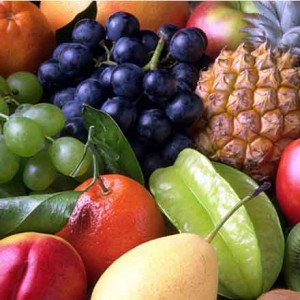
The Philippines imported about US$377.2 million worth of fresh, dried or frozen fruits during 2018. That dollar amount represents a 12.4% improvement over 2017, and more than doubled (up 115.6%) compared to $174.9 million in purchases from international supplies in 2014.
Fresh apples represent over four-fifths (42.7%) of the overall value of Filipino-imported fruits during 2018.
Imported fresh grapes at 17.7% may have been a distant second trailed by fresh pears at 15.3%. Combined, fresh apples, grapes and pears account for three-quarters (75.7%) of fruits purchased by the Philippines on international markets.
Seven of the Philippines’ top 10 imported fruit categories encompass fresh goods, and as such are perishable products with limited shelf-lives.
China supplied 96% of fresh apples imported into the Philippines during 2018, with 2.9% originating from faraway United States and just 0.9% coming from New Zealand’s apple orchards. On the other hand, the United States provides almost two-thirds (61.9%) of fresh grapes imports. The latter percentage is far ahead of fresh grapes coming from Australia (15.5%), China (10.4%), Chile (9.2%), Canada (0.9%), Turkey (0.8%) and South Africa (0.6%).
Top 10 Imported Fruits Loved in the Philippines
Below are the 10 major types of fruits that the Philippines bought from international suppliers during 2018, sorted by dollar value in ascending order. Shown with parenthesis is the percentage change in value bench-marked against imported amounts five years earlier.
- Fresh apples: $161.1 million (Up 93.2% from 2014)
- Fresh/dried mandarins, tangerines, clementines: $66.9 million (Up 110.2%)
- Fresh grapes: $57.6 million (Up 163.8%)
- Fresh pears: $25.9 million (no 2014 data)
- Fresh or dried oranges: $15 million (Up 31.8%)
- Dried grapes including raisins: $13.4 million (Up 136.7%)
- Fresh/dried lemons: $13.3 million (Up 1,025%)
- Fresh kiwifruit: $3.6 million (Up 147.6%)
- Preserved cherries: $3.3 million (Up 1,118%)
- Frozen strawberries: $1.1 million (Down -8.2%)
This brings us to some other interesting growth trends among imported fruits.
Fastest-growing Filipino Fruit Imports
Among the top 10 categories, the value of imported preserved cherries grew at the fastest-pace over the 5-year period just ahead of fresh or dried lemons.
- Preserved cherries: Up 1,118% since 2014 ($3.3 million)
- Fresh/dried lemons: Up 1,025% ($13.3 million)
- Fresh grapes: Up 163.8% ($57.6 million)
- Fresh kiwifruit: Up 147.6% ($3.6 million)
- Dried grapes including raisins: Up 136.7% ($13.4 million)
- Fresh/dried mandarins, tangerines, clementines: Up 110.2% ($66.9 million)
- Fresh apples: Up 93.2% ($161.1 million)
- Fresh or dried oranges: Up 31.8% ($15 million)
- Frozen strawberries: Down -8.2% ($1.1 million)
- Fresh pears: $25.9 million (no 2014 data)
There were triple-digit gains in demand among Filipinos for Vitamin-C rich fresh grapes and kiwifruit, raisins and fresh or dried mandarins, tangerines and clementines.
Research Resources
The World Factbook, Field Listing: Agriculture – Products, Central Intelligence Agency. Accessed on April 5, 2019
Trade Map, International Trade Centre. Accessed on April 5, 2019
Wikipedia, List of largest producing countries of agricultural commodities. Accessed on April 5, 2019